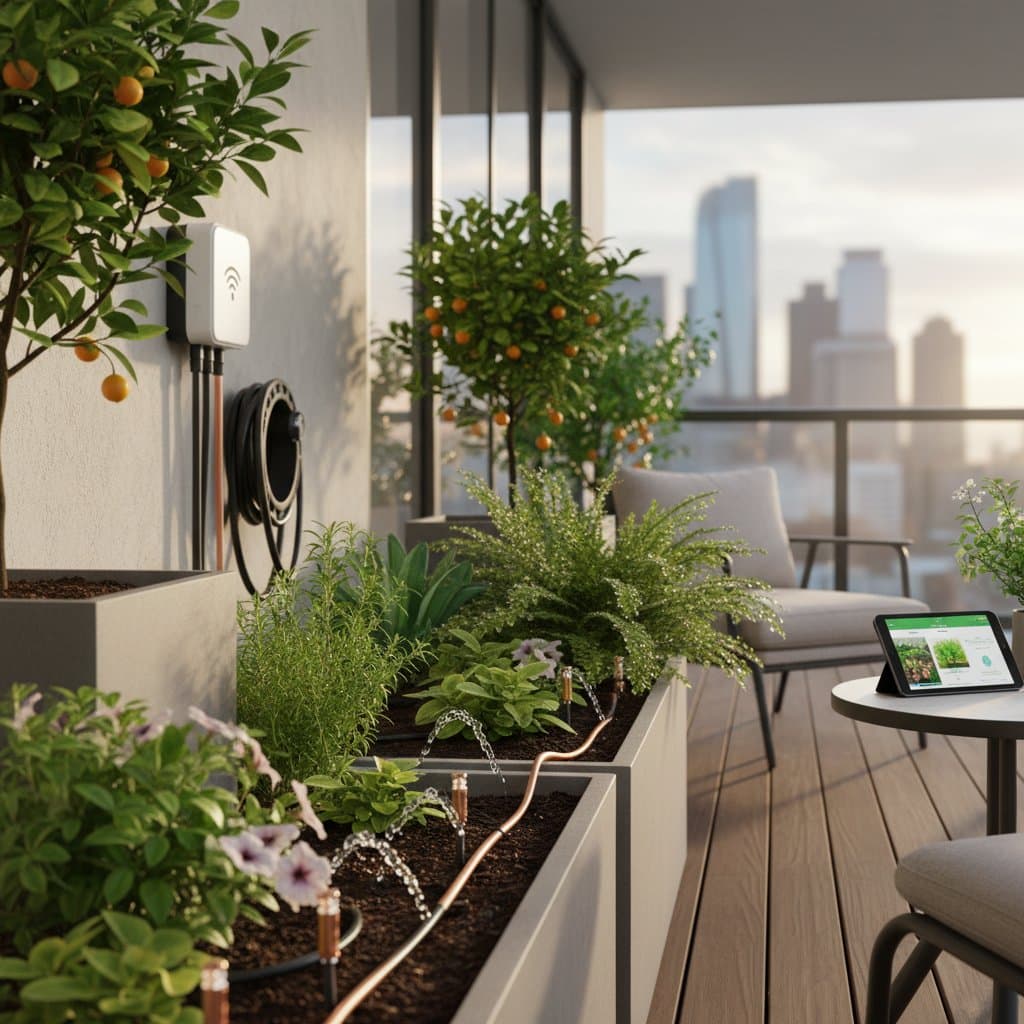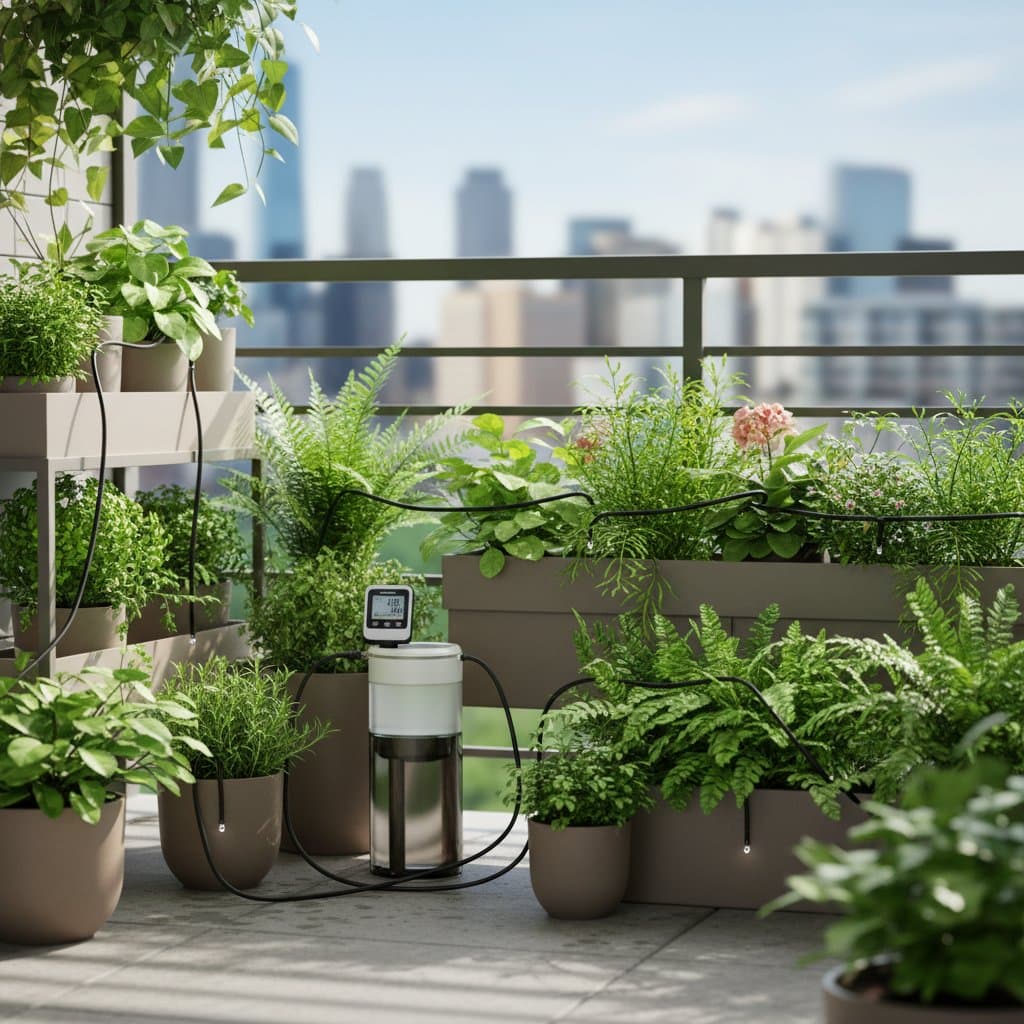Why Choose Drip Irrigation for Balcony Gardening
Urban balconies offer limited space for plants, yet they demand regular care to flourish. Traditional watering methods often lead to overwatering, underwatering, or wasted effort, especially in varying weather conditions. Drip irrigation addresses these challenges by delivering water directly to plant roots through a network of tubes and emitters, mimicking natural rainfall in a controlled manner.
This system ensures even moisture distribution without soaking foliage, which reduces disease risk and promotes healthier growth. For city dwellers with busy schedules, drip irrigation transforms balcony maintenance from a chore into a seamless part of daily life. It adapts well to containers, raised beds, and hanging planters, making it ideal for compact outdoor spaces.
Key Benefits of Installing Drip Irrigation
Drip irrigation stands out for its efficiency in water use. Studies show it can cut water consumption by up to 50 percent compared to manual methods, as water targets the soil rather than evaporating or running off. This feature proves particularly valuable in dry climates or during hot summers when balcony pots dry out quickly.
Beyond conservation, the system saves time. Instead of daily checks and watering sessions, users set it up once and let it run on a schedule. Plants receive precise amounts of water, preventing issues like root rot from excess moisture or wilting from neglect. Healthier plants mean less replacement and more enjoyment of fresh herbs, flowers, or vegetables right outside the door.
Environmentally, drip irrigation minimizes runoff that carries fertilizers into stormwater systems. It supports sustainable urban gardening by encouraging water-wise practices in high-density living areas. Overall, the investment yields long-term rewards in plant vitality and reduced maintenance demands.
Essential Materials for Your Balcony Setup
Assembling a basic drip irrigation kit requires straightforward components available at garden stores or online. Start with a timer or faucet adapter to connect the system to a standard outdoor hose bib or indoor sink if the balcony lacks direct water access. A pressure regulator maintains consistent flow, preventing damage to delicate tubes.
The core is the tubing: use 1/2-inch mainline tubing for the backbone, branching into 1/4-inch distribution lines with emitters spaced according to plant needs, such as every 6 to 12 inches for dense pots. Include adjustable drippers or soaker hoses for flexibility in watering rates, typically 0.5 to 2 gallons per hour per emitter.
Do not overlook connectors, tees, and end caps to customize the layout. A filter prevents clogs from sediment in city water supplies. For a starter kit serving 10 to 20 plants, expect to gather these items for under 50 dollars, ensuring scalability as your balcony garden expands.
Step-by-Step Installation Guide
Begin by planning the layout. Map out plant locations on your balcony, noting sun exposure and pot arrangements to optimize tubing paths. Measure distances to determine tubing lengths, adding extra for adjustments.
-
Attach the faucet adapter or timer to your water source. Secure the pressure regulator and filter inline to protect the system.
-
Run the mainline tubing along the balcony railing or pot edges, using stakes or clips to hold it in place without obstructing walkways.
-
Connect distribution lines to the mainline with tees or elbows. Punch holes in the mainline for 1/4-inch tubing insertions, then place emitters near each plant's base, burying them slightly in soil for discretion.
-
Cap the ends of all lines to maintain pressure. Test the system by turning on the water at low flow, checking for leaks and ensuring even distribution across all emitters.
-
Adjust emitter flow rates based on plant types; for example, succulents need less than thirsty tomatoes. Secure loose tubing with zip ties to withstand wind.
Installation typically takes one to two hours for a small setup. Work on a calm day to avoid tangles, and rinse components before assembly to remove manufacturing residues.
Safety and Troubleshooting Measures
Safety starts with proper installation to avoid hazards. Ensure all connections seal tightly to prevent drips that could make balcony surfaces slippery. Position tubing away from electrical outlets or devices, especially if automating with battery-powered timers.
Check local regulations for balcony modifications; some buildings restrict permanent fixtures. Use UV-resistant tubing to withstand sun exposure without degrading over seasons.
Common issues include clogs from mineral buildup. Flush the system monthly by running plain water through it. If pressure drops, inspect the filter for debris. For uneven watering, recalibrate emitters or extend tubing to reach overlooked areas. These proactive steps keep the system reliable year after year.
Integrating Automation for Effortless Care
Elevate your setup with automation to eliminate manual intervention. Battery-operated timers program watering cycles, such as 10 minutes every other day, adjustable via simple dials or digital interfaces. Connect to a smart home system for app-based control, allowing remote activation during vacations.
Soil moisture sensors add precision by detecting dryness and triggering water only when needed, further conserving resources. Rain delay features pause operation during wet weather, preventing over-saturation.
Start simple with a basic timer, then upgrade as familiarity grows. This layer of technology ensures consistent care, even for forgetful gardeners, while adapting to seasonal changes like reduced watering in cooler months.
Maintenance Tips for Long-Term Success
Regular upkeep sustains system performance. Inspect tubing quarterly for cracks or wear, replacing damaged sections promptly. Clean emitters by soaking in vinegar solution to dissolve scale.
Winterize by draining water before freezes to avoid bursts; store components indoors if possible. In spring, test and expand as new plants join the collection.
Monitor plant health indicators, such as yellow leaves signaling overwatering, and tweak schedules accordingly. With these habits, drip irrigation remains a durable solution, supporting a vibrant balcony ecosystem with minimal ongoing effort.
Cultivate a Thriving Balcony Haven
Implementing drip irrigation unlocks the full potential of balcony gardening. Plants stay hydrated and robust, allowing focus on harvesting or admiring blooms rather than tedious tasks. This efficient approach not only halves watering demands but also fosters a greener, more sustainable urban lifestyle.
Experience the difference as your space evolves into a lush retreat. With steady moisture and smart design, every pot contributes to a refreshed outdoor environment tailored to city living.






